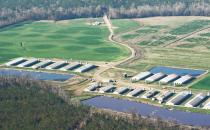Cape Fear River is not a swamp, EPA confirms
In recent years, North Carolina’s Cape Fear River has suffered from increased pollution generated by various industries in the watershed, particularly industrial hog operations. One notable impact of all this pollution has been on the levels of dissolved oxygen in the water, which have dropped to unnatural, dangerously low levels.
As various parties recognized they would need to make significant changes to manage downstream the upstream damage caused to the watershed, they instead decided to rewrite state policies in their favor. A petition went to state authorities, asking them to reclassify a 15-mile section of river from Navassa to Snow’s Cut as a swamp, meaning no one would need to change their ways.
Once the request received state approval under the previous administration, the reclassification was sent to the Environmental Protection Agency for final authorization, which was denied earlier this month. At each step of the process, SELC, on behalf of Cape Fear River Watch and Waterkeeper Alliance, challenged this outrageous maneuver.
We are pleased that the EPA refused to bless DEQ’s arbitrary declaration that the Lower Cape Fear River is a swamp,” said SELC attorney Brooks Pearson. “The swamp classification is intended to protect unique habitats, not to excuse pollution from industrial hog operations.
EPA’s decision recognized, in part, that the reclassification would have allowed lower concentrations of dissolved oxygen in the river, which occur naturally in swamp waters but not in the lower Cape Fear River. As home to many important species, including endangered Atlantic sturgeon, the Cape Fear’s violation of the dissolved oxygen standard was one of the first red flags for many concerned with the health of the river system.
As the largest river system in North Carolina, the Cape Fear touches 9,000 square miles across 29 counties. This broad reach in an area known for industrial agriculture has led to a heavy pollution load, much of it from runoff coming off of large-scale hog farming.
State environmental officials will advise the Environmental Management Commission, at their upcoming September 12-13 meeting, to accept EPA’s decision and take no further action on the matter. And, while this is a good next step, SELC and our partners will be working with DEQ to reclassify this portion of the Lower Cape Fear back to its former designation as Tidal Salt Water so the proper designation is on the books.

